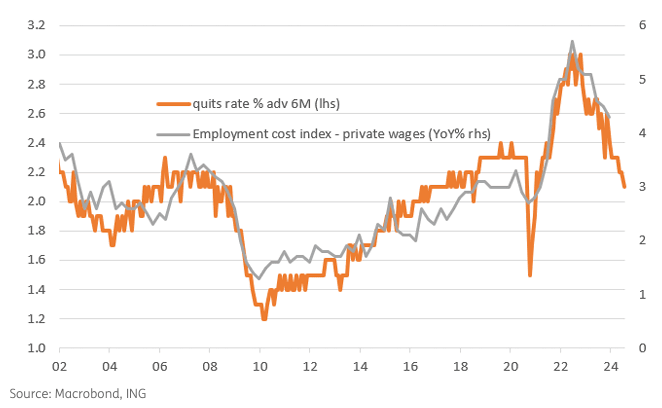GBP/USD Hits 1.2750, Falling U.S. Quit Rate Points to Cooling Labour Market
- Written by: Gary Howes

Image © Adobe Images
Dollar exchange rates were broadly weaker on the day a U.S. job survey revealed fewer people are quitting jobs each month to pursue higher-paid prospects.
GBP/USD rose a third of a per cent to 1.2744 after the decline in the quit rate signalled to markets the U.S. labour market is cooling, which should bring wage pressures down and bolster the odds of an interest rate cut by mid-year.
The gains in the GBP/USD exchange rate mean the pound is now the joint best-performing G10 currency alongside the dollar for 2024.
Although Federal Reserve Chair Jerome Powell's appearance before U.S. lawmakers attracted media attention, the Job Opening and Labour Turnover Statistics (JOLTs) report likely had the bigger implications for financial markets.
GBP to USD Transfer Savings Calculator
How much are you sending from pounds to dollars?
Your potential USD savings on this GBP transfer:
$318
By using specialist providers vs high street banks
"We are more interested in the quit rate - the proportion of workers quitting their job to move to a new employer each month - and that slowed to 2.1% from 2.2%. It had been as high as 3% in 2022," says James Knightley, Chief International Economist at ING.
He explains that this slowdown suggests that while there are still many vacancies out there, they aren't especially attractive, and fewer and fewer people are interested in filling them.
"This has a knock-on effect in that if there is less labour market churn there is less need for an employer to pay up to retain staff," says Knightley. "Falling quits ratio suggests more heat is coming out of the jobs market with cost pressures set to ease further."
Above: Falling labour market churn implies further wage declines, which can bring inflation down in coming months. Track GBP/USD with your own custom rate alerts. Set Up Here
The chart above shows the relationship with the employment cost index - the broadest and best measure of labour costs since it includes bonuses and benefits - and it suggests an ongoing cooling, which should delight the Federal Reserve.
"It suggests that inflation pressures from the jobs market are normalising despite unemployment being low," says Knightley.
"For now, the JOLTS data signal that the jobs market is slowly settling down, consistent with wage, and thus inflation, pressures cooling without a worrisome slowdown in net job creation and overall economic activity. The gradual, rather than marked, softening in the labor market will likely keep the FOMC comfortable in waiting a little while longer before beginning to cut rates," says Sarah House, an economist at Wells Fargo.
GBP/USD rose to 1.2722 on Tuesday after the U.S. ISM services PMI read at 52.6 in February, down on January's 53.4 and below consensus expectations for 53.
The composite index indicated growth in February for the 14th consecutive month after a reading of 49% in December 2022, the first contraction since May 2020.
Meanwhile, the Employment Index contracted for the second time in three months, reading 48%, a 2.5-percentage point decrease from the 50.5% recorded in January.
All eyes now turn to the non-farm payroll report, one of the marquee events in the Dollar's monthly calendar, where investors will be eyeing clear signs of a jobs market slowdown.
Any undershoot in the data can spur further Dollar weakness.





